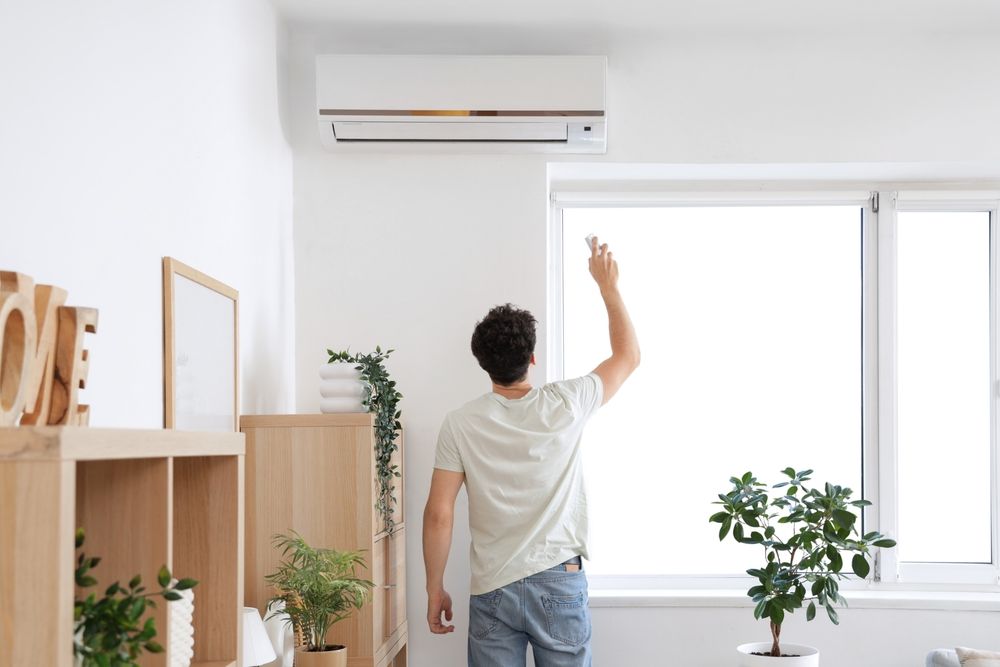
Planning to buy a new home or want to upgrade your current heating and cooling system? Melbourne is known for its four seasons in a day, so you want your home (or business building) to be prepared for anything!
With ducted reverse cycle air conditioning and split systems as two options to think about, what should you pick to heat and cool your space?
Everyone has a different home layout, comfort preferences, and a budget limit, but there’s a lot to compare with ducted and split systems. From installing them to how energy-efficient they are, this article will help you make a decision.
Heating and Cooling Technologies: Let’s Look At Them!
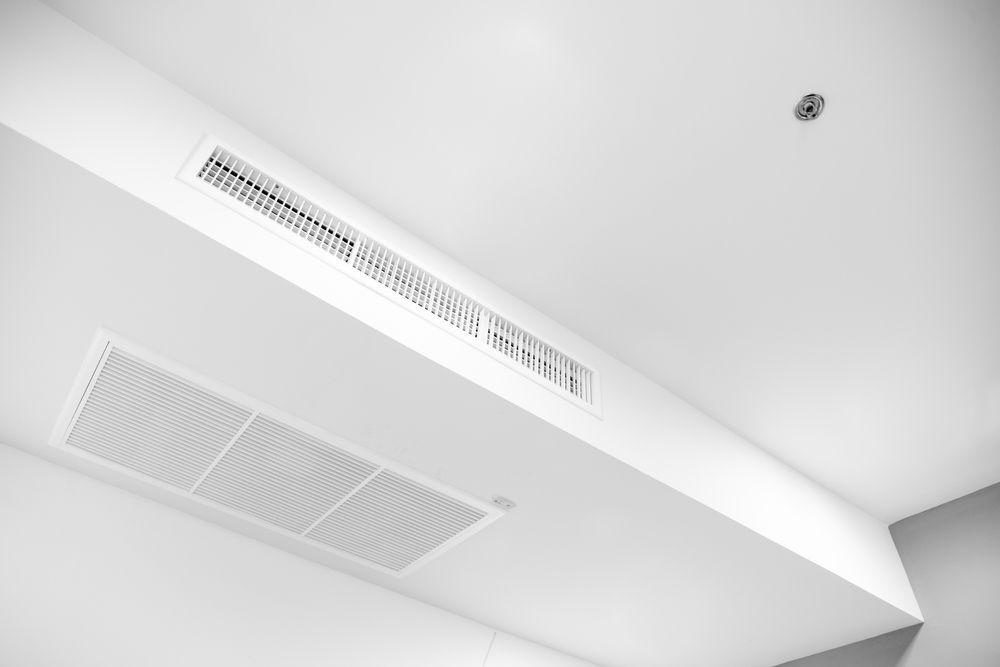
Ducted and split systems. Both are different in how they work for your spaces.
What Are Ducted Systems?
If you’re looking for whole-home heating and cooling, ducted reverse cycle air conditioning is different to a single split system that cools one room. With a ducted system (central air conditioning), air is sent through ducts from one central location to heat and cool all rooms.
The air outlets come in the form of vents on the ceiling, floor, or wall in comparison to multi-split systems with an internal unit in each room that they cool. What are some of the components of gas ducted heating?
- The outdoor compression unit is connected to the internal unit through condensate drain lines and a power cable. Its purpose? To pump refrigerant into the ductwork via a motorised system that creates energy!
- The ductwork is the large pipes that connect different rooms to air outlets, and these vary depending on how powerful the system is and how large your rooms are.
- Filters, which keep the airflow clean and dust-free.
- The indoor central control unit is where you can adjust the temperature and connect the outdoor compressor to the ducts.
- Zone dampers. You can tweak the temperatures in different rooms at the same time.
Modern ducted systems also allow for zoning, meaning you can control the temperature in different parts of your house independently. It’s great for larger homes or families with varied comfort preferences.
What Are Split Systems?
Split systems are made up of two units:
- A wall-mounted indoor unit that blows conditioned air into the home
- An outdoor unit that pushes and expels the heat gathered from the indoor system
The indoor unit is made up of an evaporator coil, air blower, expansion valve, capacitor, and air filter. The outdoor unit includes a compressor, condenser and refrigerant.
Split systems are excellent choices for apartments, small homes or spaces such as a bedroom or home office, as they excel at regulating the climate in a single room or space. Generally, they are suitable for rooms up to 60m2 and if you’re looking for flexible, targeted control without a complex, full-ducted setup.
How Do They Compare?
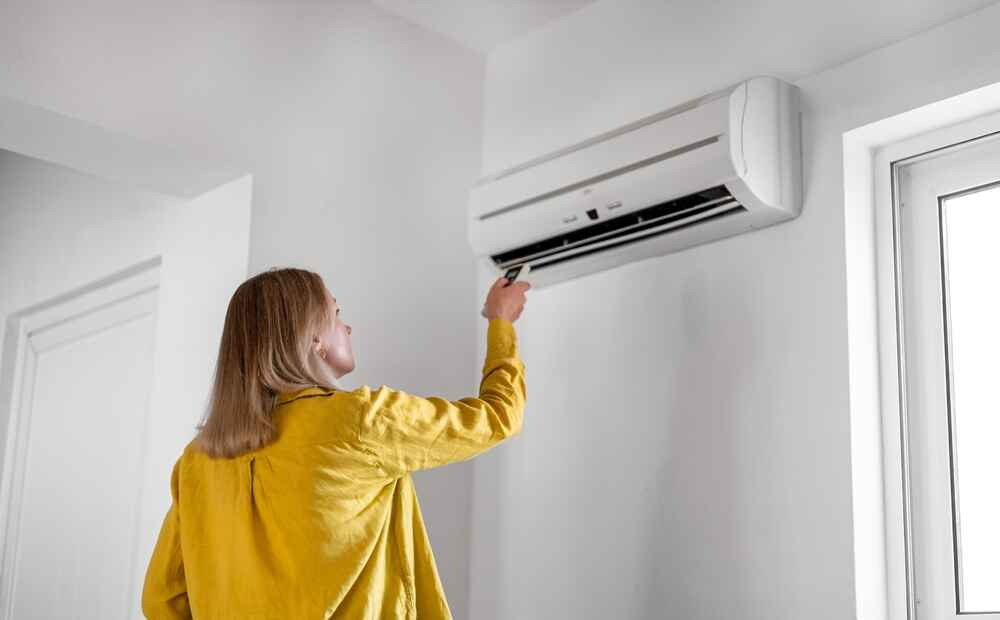
Now that you know what these systems are, how do they compare in terms of installation, maintenance, look, and overall cost?
Installation and Setup
Ducted system installation has a few steps! A HVAC technician will assess your home layout to design a custom ductwork plan, route the ducts, and connect the system to your electrical and plumbing. The central unit is placed in the roof cavity or underfloor space and runs ducts to each room. Sometimes parts are disassembled for easier access. As for the outdoor unit, refrigeration pipes and electrical interconnections are run to the indoor unit.
Installing a ducted reverse cycle air con is best suited to new builds or major renovations, as it can involve significant structural adjustments. For larger homes, comfort and efficiency benefits outweigh the upfront complexity.
As for split system installation, a suitable location in your home is chosen to mount the indoor unit at the right angle for proper drainage of condensation. Next, electric wiring, tubing, and copper pipes go through to the outdoor unit. Since there’s zero ductwork, the process is less invasive and can often be completed in just a few hours. Split systems are good if you want to control the climate in one or two rooms.
What About Costs?
Over time, operational costs can balance out depending on how you use the systems. Ducted systems may be more efficient in large homes where multiple rooms are used regularly, whereas split systems can be cost-efficient when used to cool only the bedroom at night or a living area during the day.
What are the approximate annual energy costs and greenhouse gas emissions for these cooling systems? These figures were last updated in December 2024.
For a small room of 12 square metres, a split system with a 6-star efficiency rating has an annual energy cost of $6 and uses 0.1 tonnes of GHG emissions per year.
For a medium room of 30 square metres, a 5-star energy-efficient split system has an annual energy cost of $17 and uses 0.3 tonnes of GHG emissions annually.
For a large room of 60 square metres, a 5-star split system air conditioner has an annual cost of $33 and uses 0.6 tonnes of GHG emissions yearly.
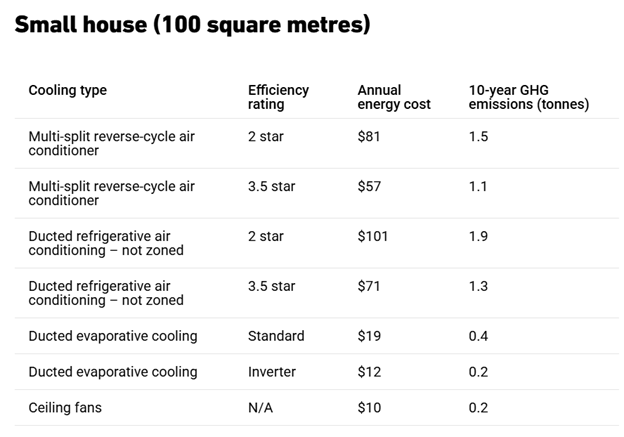
In a small house of 100 square metres, a multi-split reverse cycle air conditioner with a 3.5 star energy efficiency rating costs $57 per year and uses 1.1 tonnes of GHG emissions yearly. A ducted refrigerative air conditioner (not zoned) with a 3.5 energy efficiency rating costs $71 per year and uses 1.3 tonnes of GHG per year.
For a medium house of 160 square metres, a 3.5 star multi-split reverse cycle air conditioner costs $90 per year and uses 1.7 tonnes of GHG annually. As for a 3 star ducted refrigerated air conditioning (not zoned) it costs $125 annually and uses 2,3 tonnes of GHG.
For a larger house (220 square metres), a 3.5-star energy-efficient multi-split reverse cycle air conditioner costs $125 per year and uses 2.3 tonnes of GHG yearly. A 3-star ducted refrigerative air conditioning (not zoned) costs $172 annually and uses 3.2 tonnes of GHG emissions.

The Energy Star ratings for the refrigerated air conditioners are based on the new Zoned Energy Rating Label for air conditioners. This came into effect in April 2020, and most models available now use this label.
According to this article by The Guardian, shifting from gas to electric heating could save Victorians more than $2000 a year. More than a quarter of Victorian households with both gas ducted heating and reverse-cycle air conditioners could start saving money by using split systems for heating instead of gas.
What about the design of each system?
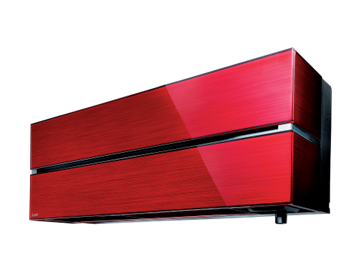
A split system is mounted high on the wall of your home and is mostly made of white or neutral-coloured plastic casing. Some brands (such as Daikin) offer sleeker models with coloured finishes, such as the MSZ-LN Series. In retail or office buildings, ceiling cassette or floor-mounted units sit flush with the ceiling grid.
Ducted reverse cycle air conditioning is completely hidden under the floor or within the ceiling space. The only components you can see are small air vents or grilles, and the return air grille can be positioned out of sight, such as in a hallway.
If you would like to learn more, have a read of some easy ways to cut heating and cooling costs!
Heating and Cooling Performance: Daikin & Mitsubishi Electric
Unsure of what system to choose for how it performs in your property? Let’s explore some Daikin and Mitsubishi Electric models and how they function.
MSZ-AP Series

- The Mitsubishi split system has a capacity range of 2.5kW to 7.8kW
- Operates quietly if needed
- Includes Night Mode
- Has a weekly timer
- Includes Dual Barrier Coating
- Vertical and horizontal vanes
- Heating and cooling
- Wi-Fi control
Check out the split systems brochure for more information on Mitsubishi models.
PEAD-M-JAAD Series
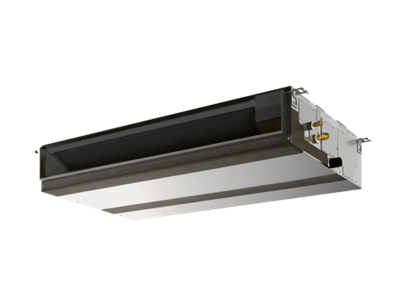
- A whole-home ducted reverse cycle aircon, this has a capacity range of 5.0 kW up to 14.0 kW.
- Includes a built-in condenser pump
- Has an external static pressure range of 35-125 Pa
- It is a low-profile design
- Includes a wide selection of fan speeds
- Wi-Fi control
Here are some Daikin models you can consider for your spaces.
Premium Inverter Ducted

- Industry-leading energy performance with a cross-pass heat exchanger, DC fan motor and improved refrigerant control technology
- Night Quiet Mode, which reduces outdoor noise levels
- Increased operation limits of up to 50°CDB ambient
- R22 retrofit capability
- Has a heating focus option from 18.0 kW to 24.0 kW with better heating performance
- Designed and manufactured in Australia
Zena Wall Mounted

- Includes an Intelligent Eye, an infrared human presence sensor that saves energy when the room is unoccupied for 20 minutes
- R32 refrigerant is a reduction in the Global Warming Potential factor, which is great for the environmentally conscious
- Coanda Airflow, meaning it streams air along the ceiling for longer, delivers faster cooling and temperature distribution
- Ultra compact in design, at only 295mm high and 798mm wide.
- Connect to Daikin’s Mobile Controller smartphone interface (Wi-Fi control)
What about maintenance? Do you need to maintain both systems?
Ducted systems require professional servicing to maintain optimal efficiency. Filters must be cleaned or replaced regularly, and the ducts should be checked for leaks or blockages. TTV Heating & Cooling offers comprehensive servicing to ensure your system stays reliable year-round.
Thankfully, Temperature Heating and Cooling can help you with general maintenance, scheduled servicing, fixed repairs & maintenance, and commercial maintenance. Whether you need heating and cooling for your office space, home, school, nursing home, childcare centre, or small business, we offer a comprehensive approach.
Why should you choose Temperature Heating and Cooling?
- We’re a family-owned and operated business with over 60 years of experience
- We are Mitsubishi Electric Diamond Dealers and a preferred Daikin Dealer
- A preferred provider to Austin Hospital
- Sales, installation, service and repair all in-house
- We don’t hire subcontractors
- We are fully insured and accredited
- A local showroom
Providing full after-sales service, we work with brands like LG, Brivis, Samsung, Toshiba, Panasonic, Braemar, and more with a 100% product warranty.
So, should you go with a ducted reverse cycle or choose a split system? It really depends on how much space you have, your budget limit, and your lifestyle.
Choose a ducted system if you want whole-home comfort, design flexibility, and the convenience of centralised control.
Go with split systems if you’re after a less expensive way to heat and cool specific rooms (and prefer easier maintenance).
Heating and Cooling for Melbourne Properties: Call TTV!
Are you looking to invest in heating and cooling for your Eltham, Blackburn, Balwyn, Box Hill, Bulleen, Burwood, Camberwell, Surrey Hills, South Yarra, Templestowe, Warrandyte, or Toorak property? Get in touch with us. We’ve been proudly servicing since 1962!
No matter your choice, working with a trusted provider like TTV Heating & Cooling means that you’ll be getting professional advice, quality installation, and long-term support.
Contact us by calling 03 9852 335 or emailing mail@temptv.com.au for multi-head split systems, bulkhead air conditioning, ducted refrigerated, air conditioning, and evaporative cooling!
